

The unit opener pages introduce students to the geographic and thematic focus of the unit and provide opportunities to elicit prior knowledge and communicative skills.
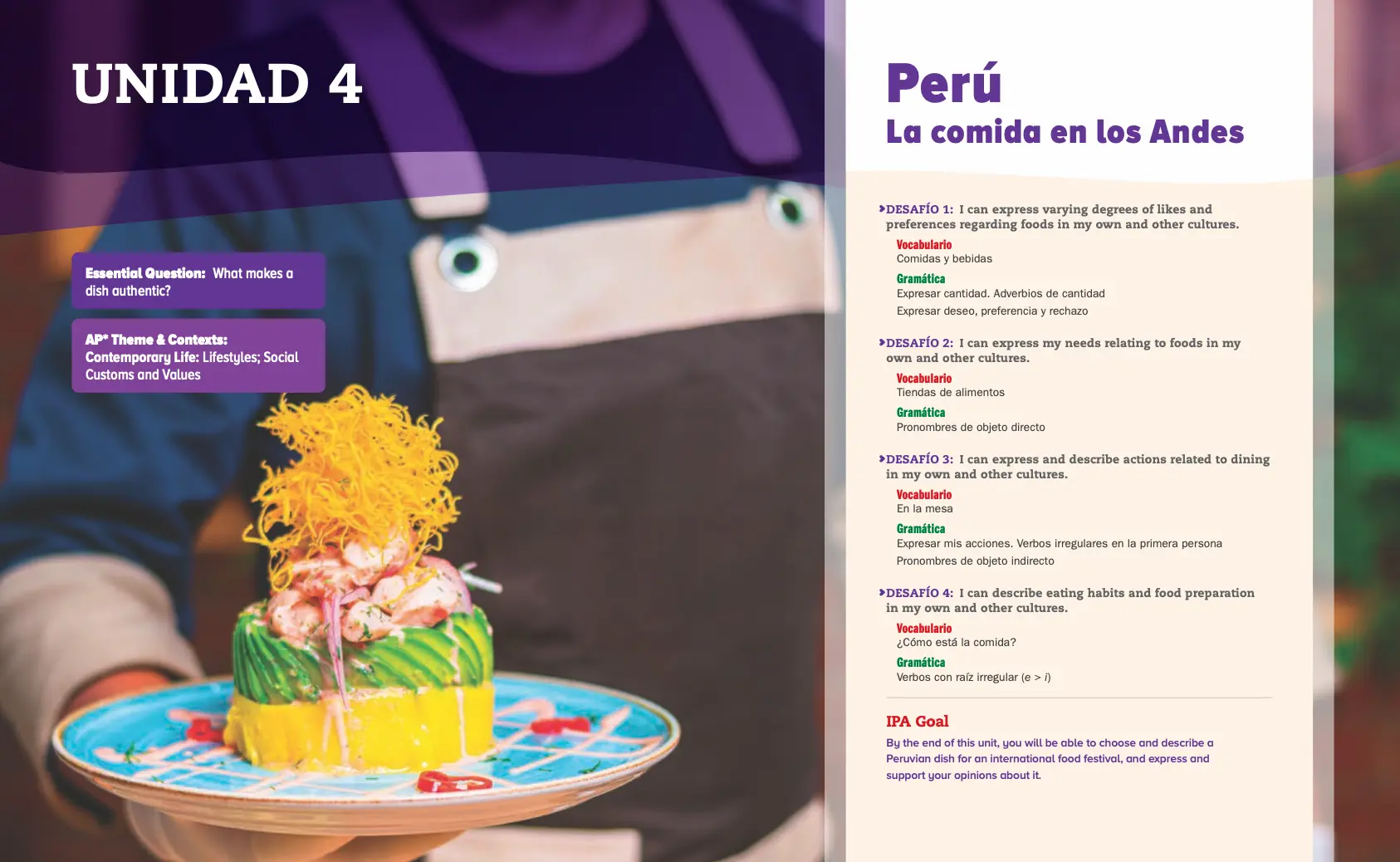
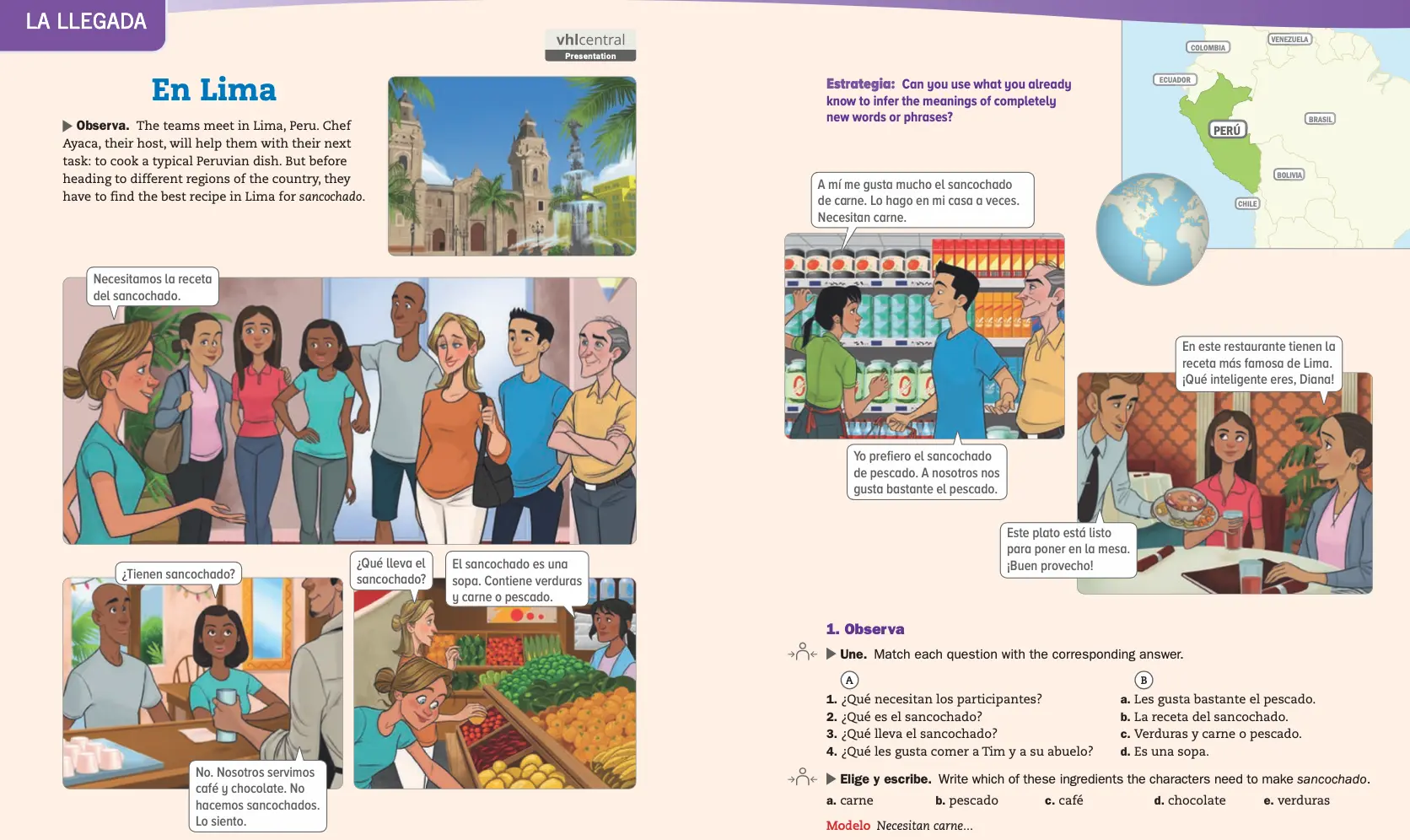
In La llegada, students see the target language for the unit in a cultural context. The dialogues provide comprehensible input that incorporates the unit’s target structures, and students are asked to use prior knowledge and interpretive communication skills to comprehend the main idea and essential details. In Level 4, this feature is called Las tareas.
In Enfoque lingüístico, students learn useful expressions, pronunciation, and orthography rules that are instantly useable, boosting their self-confidence in using the language. In Level 4, this is called Antes de empezar.
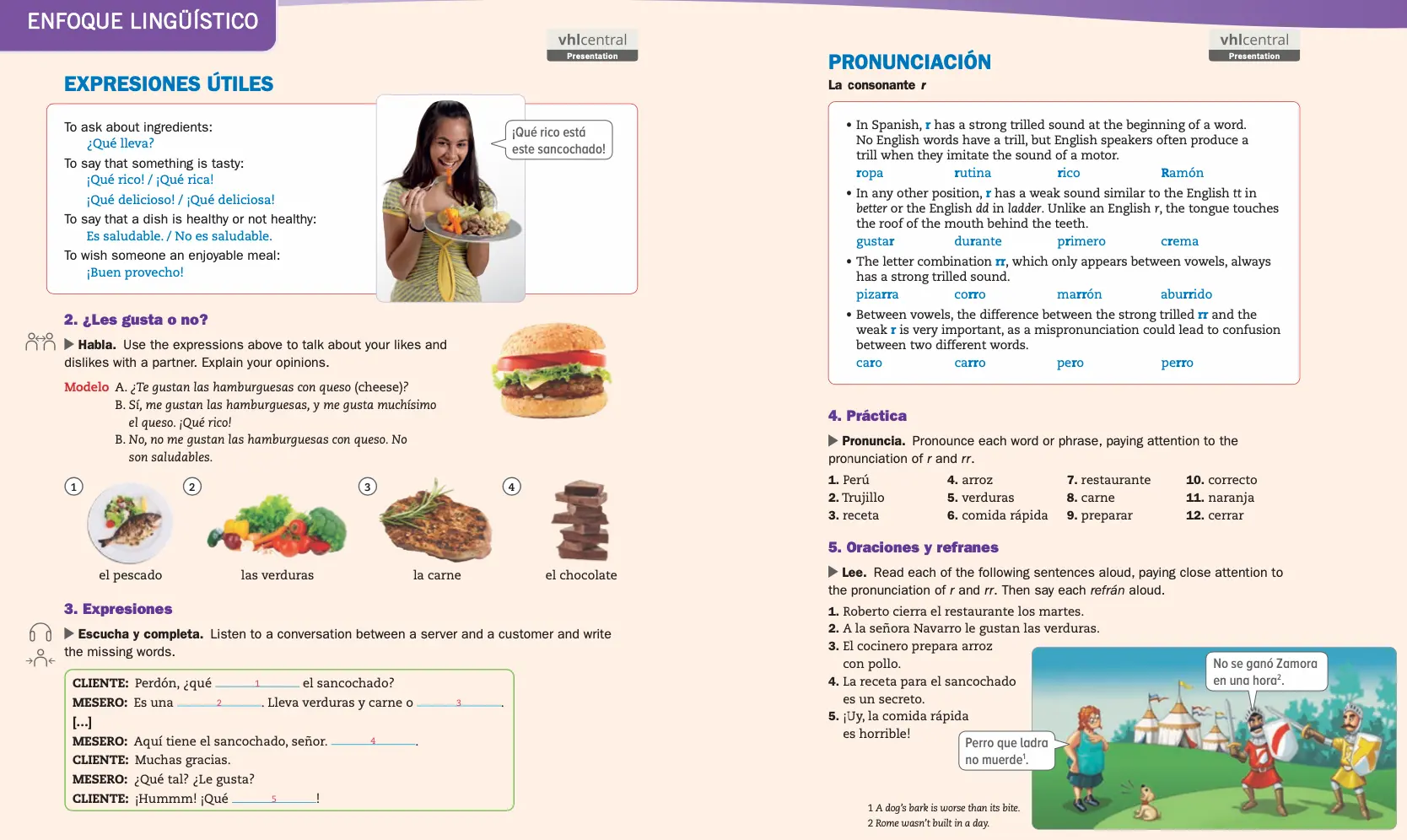
Each unit contains four mini-lessons, or Desafíos, each focused on a particular communicative skill related to the unit theme. Each Desafío presents students with a challenge and is organized into four sections:
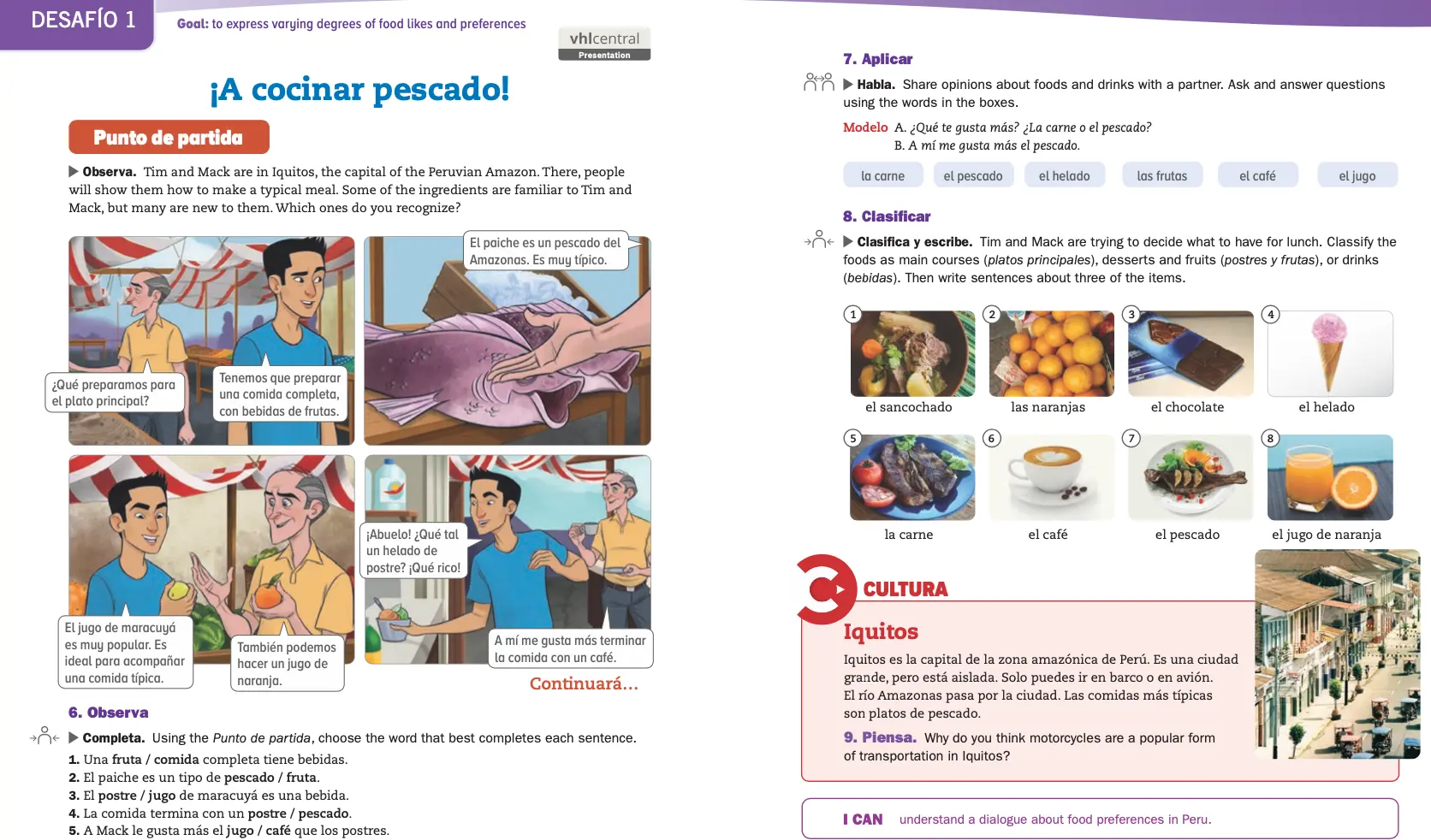
Punto de partida
Students first see the storyline characters as they take on
their cultural challenge. The Punto de partida dialogue allows students to see the
mini-lesson’s target vocabulary and grammar in a cultural context.
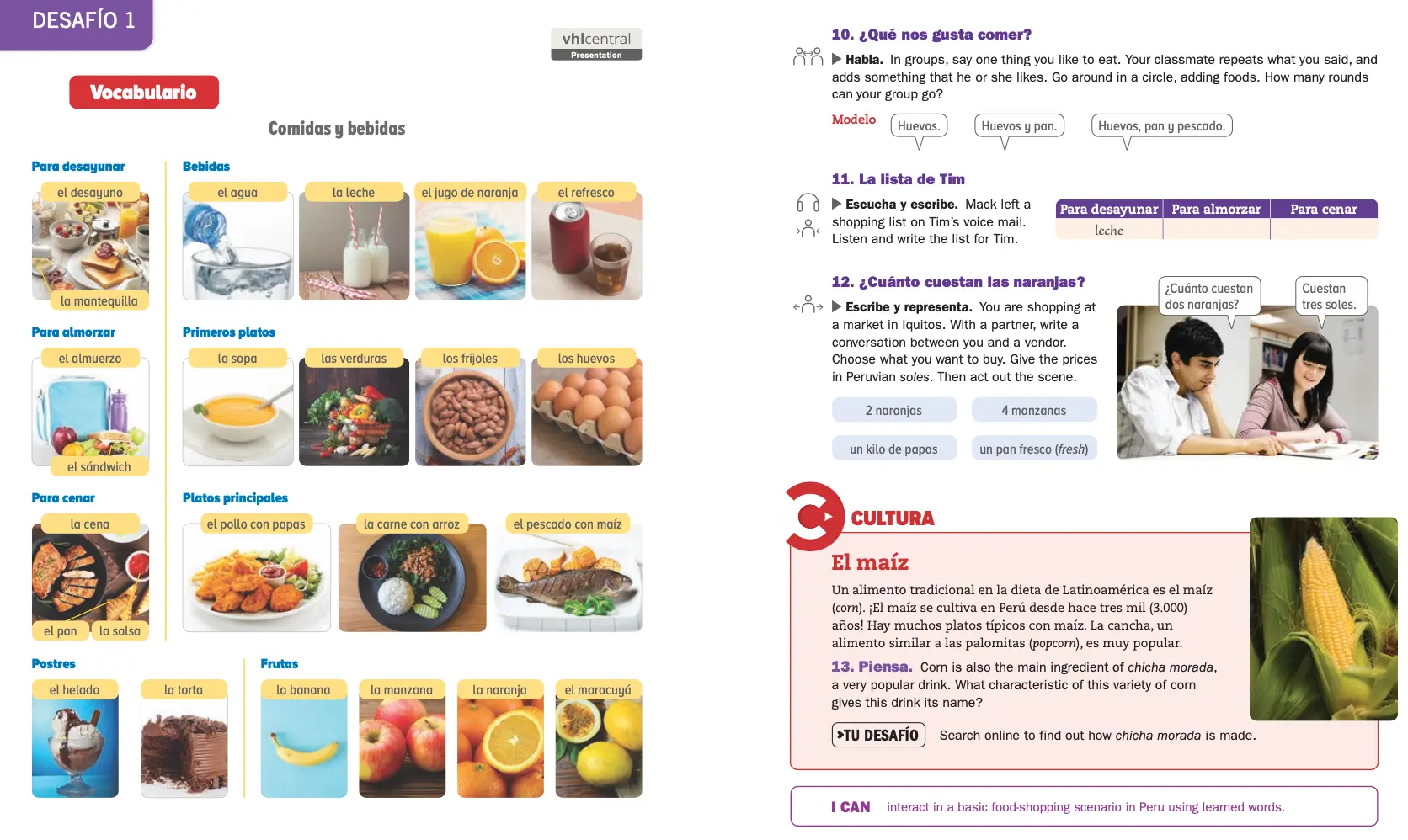
Vocabulario
In Vocabulario, students see a colorful presentation
of the target vocabulary they will need for the communicative skill at hand. New words are presented
in context and through visuals. Students reinforce new vocabulary through a progression of practice
activities.
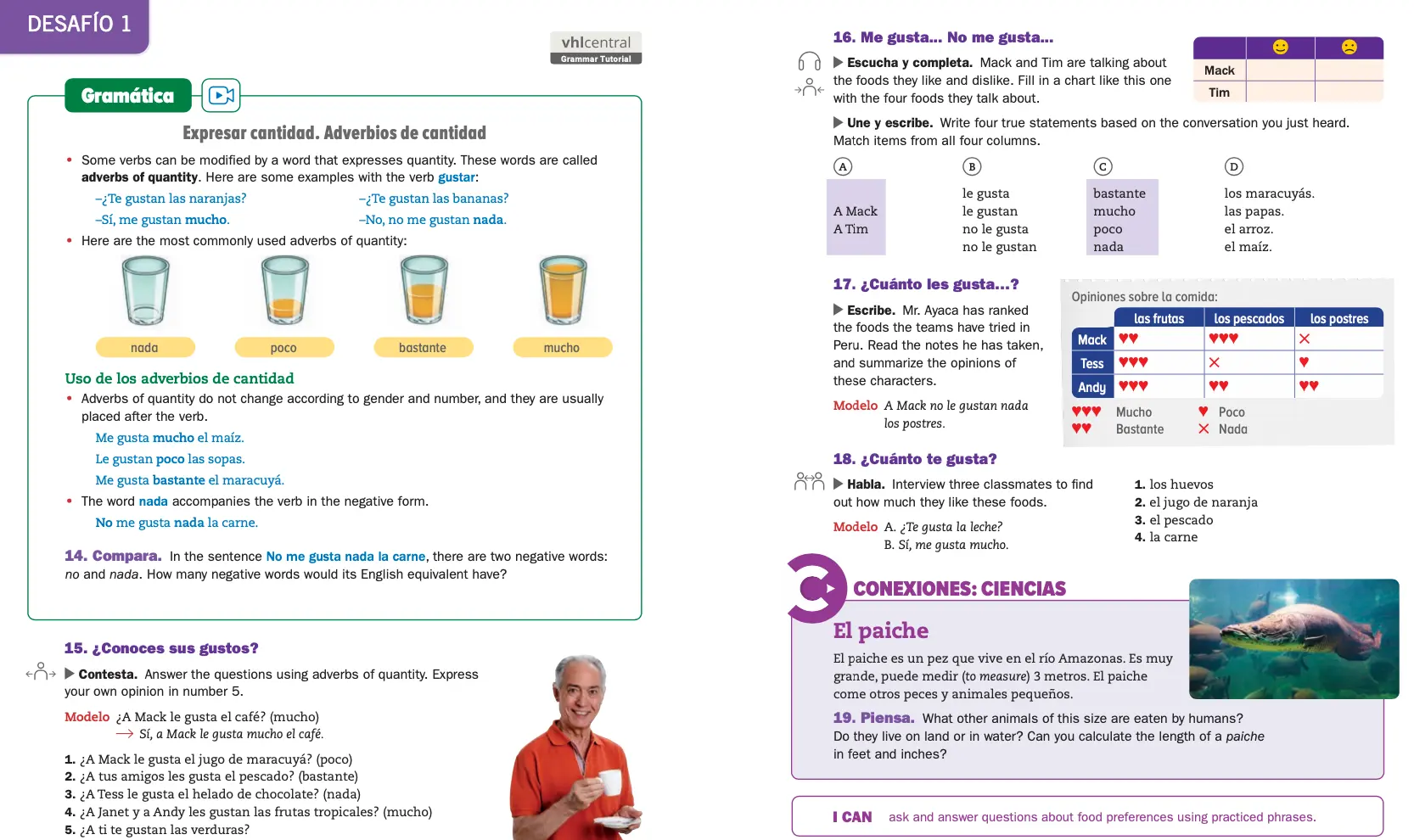
Gramática
Students then see a concise presentation of the grammatical
structure(s) necessary for the communicative skill in Gramática. Practice activities
progress from close-ended to open, personalized practice.

Comunicación
Finally, students apply their new skills in
Comunicación, an opportunity to synthesize vocabulary, grammar, and cultural
understanding.
After the four Desafíos, students integrate the communicative and cultural skills learned in the mini-lessons.
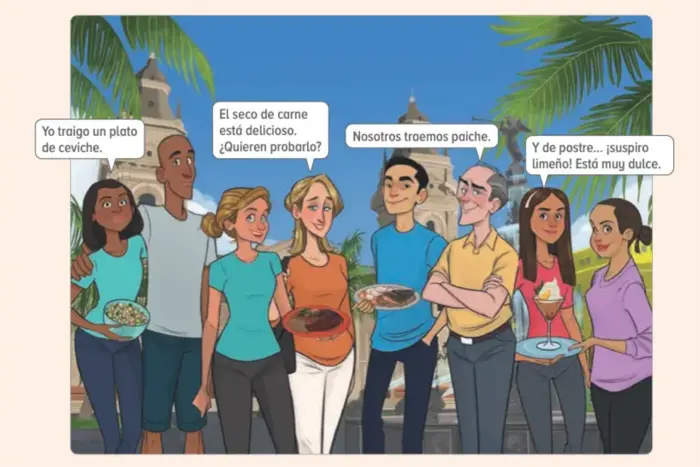
In El encuentro, students see the end of the storyline characters’ challenges. In Level 4, Para terminar, students integrate the vocabulary, grammar, and communicative skills from the unit’s mini-lessons in new ways.
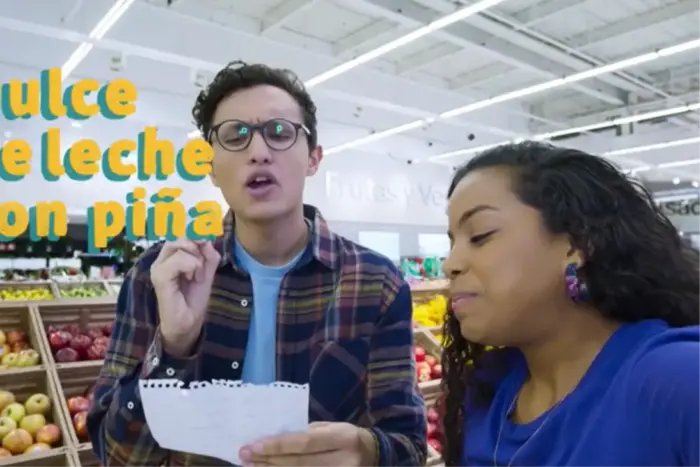
In the Un chin de... video series, students get to know YouTubers Adriana and Jaime as they show us around their lives in the Dominican Republic (Levels 1–3).
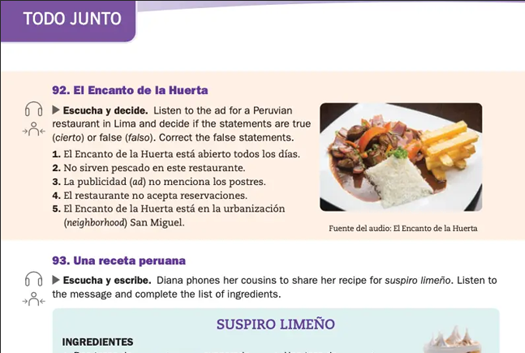
In Todo junto, students integrate the vocabulary, grammar, and communicative skills from the unit’s mini-lessons in new ways.
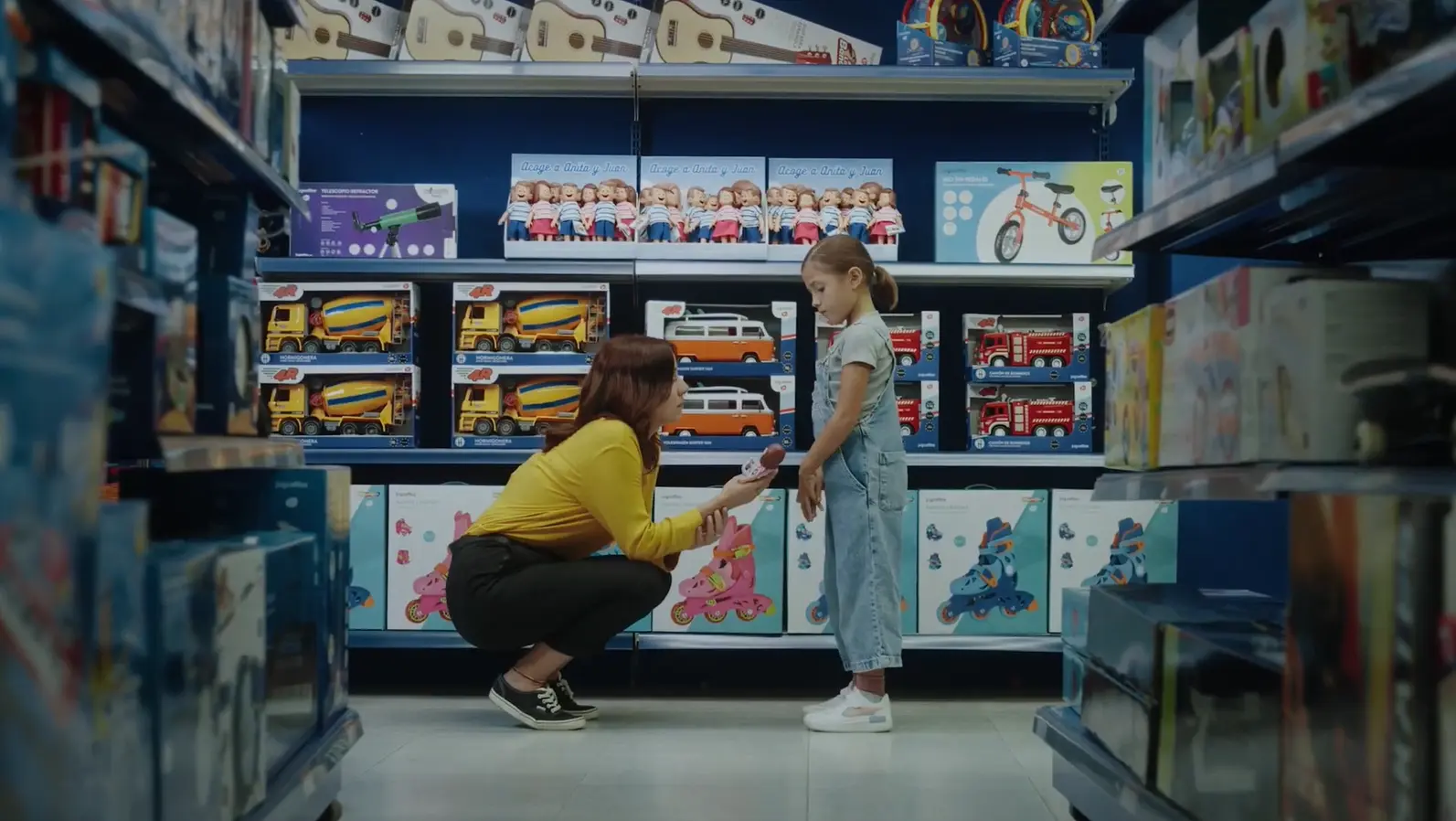
Students watch authentic TV clips and short films in VideoMundo, allowing them to access information and diverse perspectives from around the Spanish-speaking world.
Students explore the relationship between geography and culture, then further develop their language arts skills in Spanish.
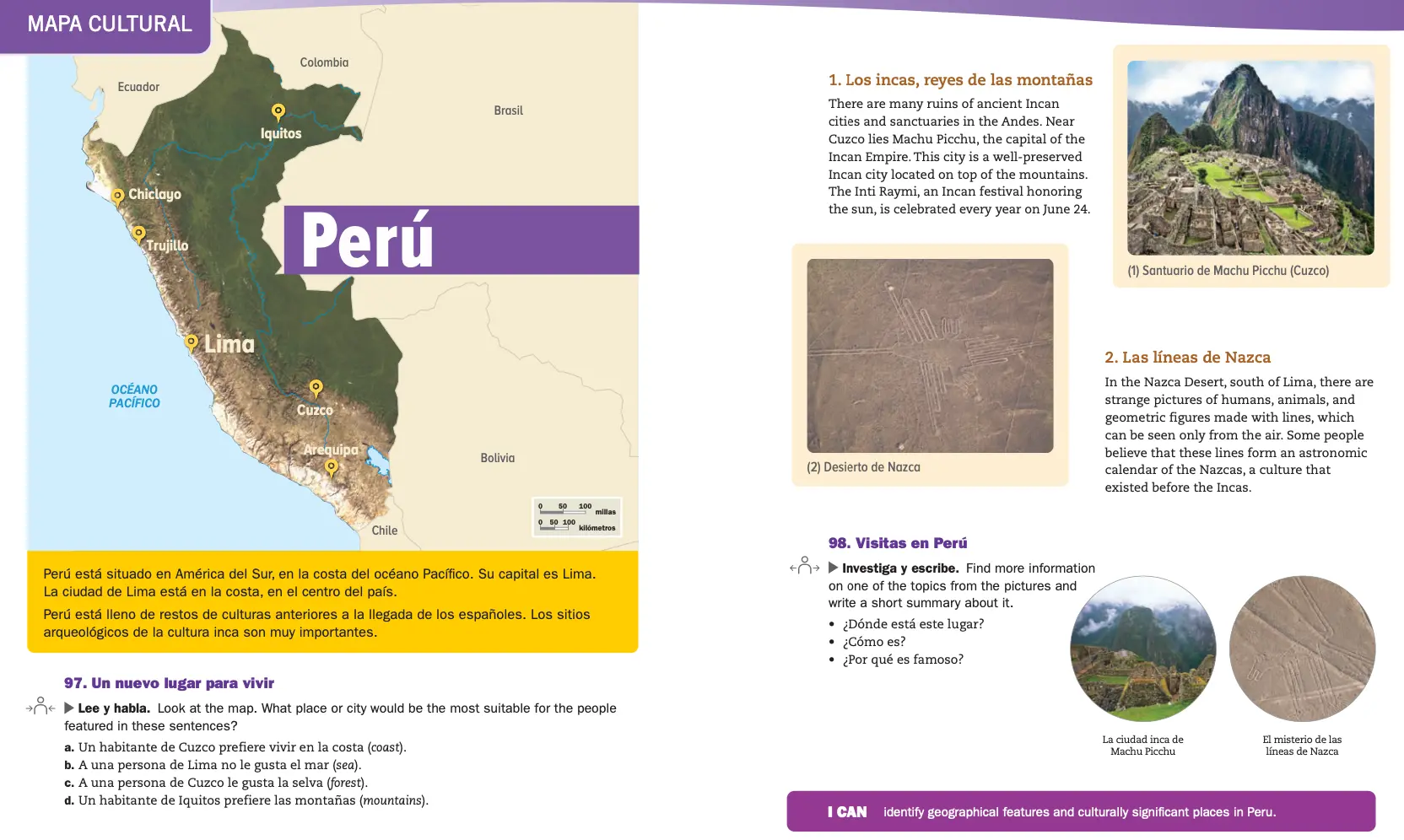
In Mapa cultural, students examine how the geography and culture of a country are inextricably linked and how a country’s geography affects its products and practices.
Dialogue and informational and literary readings form the basis of the Lectura section, in which students interpret and comprehend authentic and leveled texts in a variety of genres.
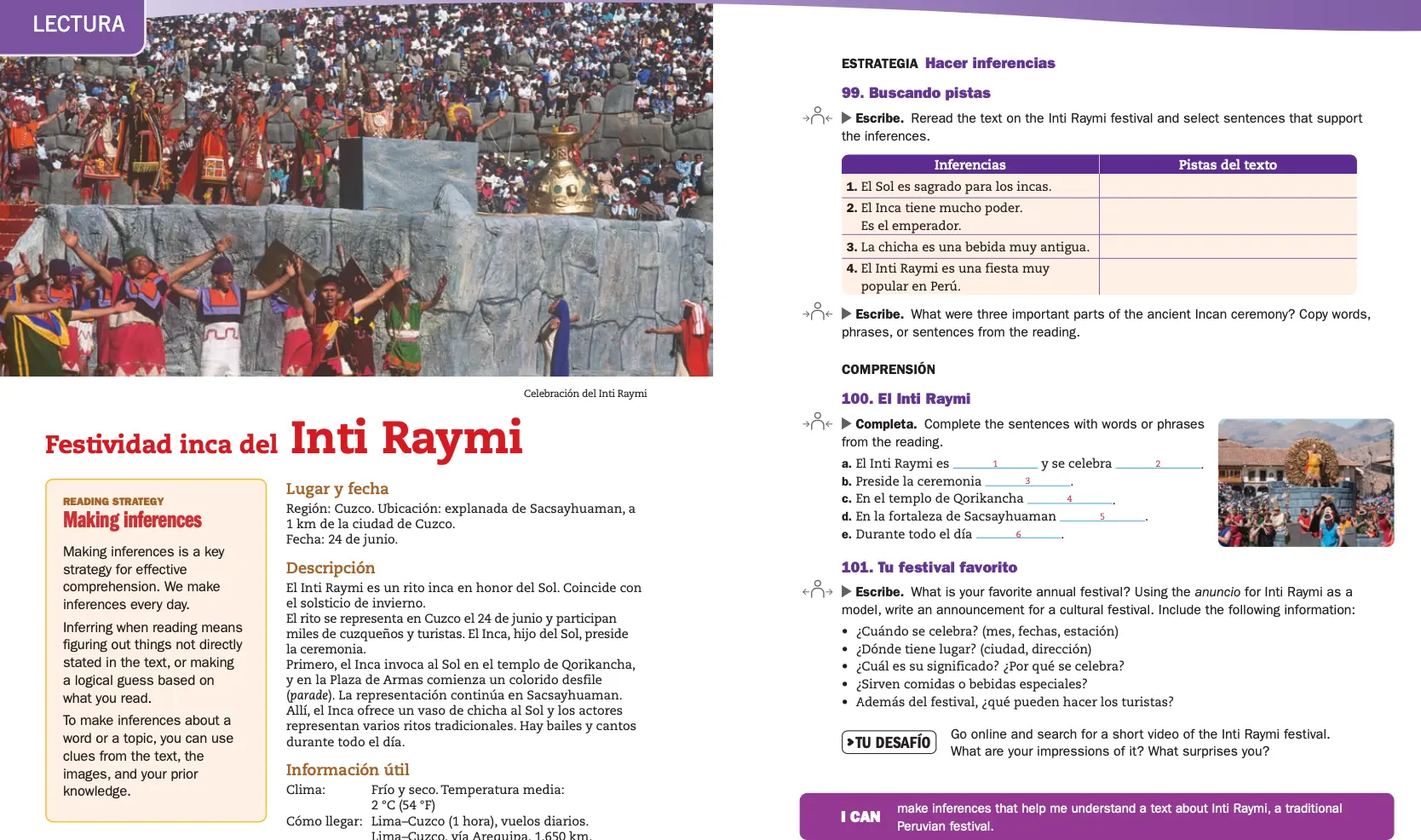
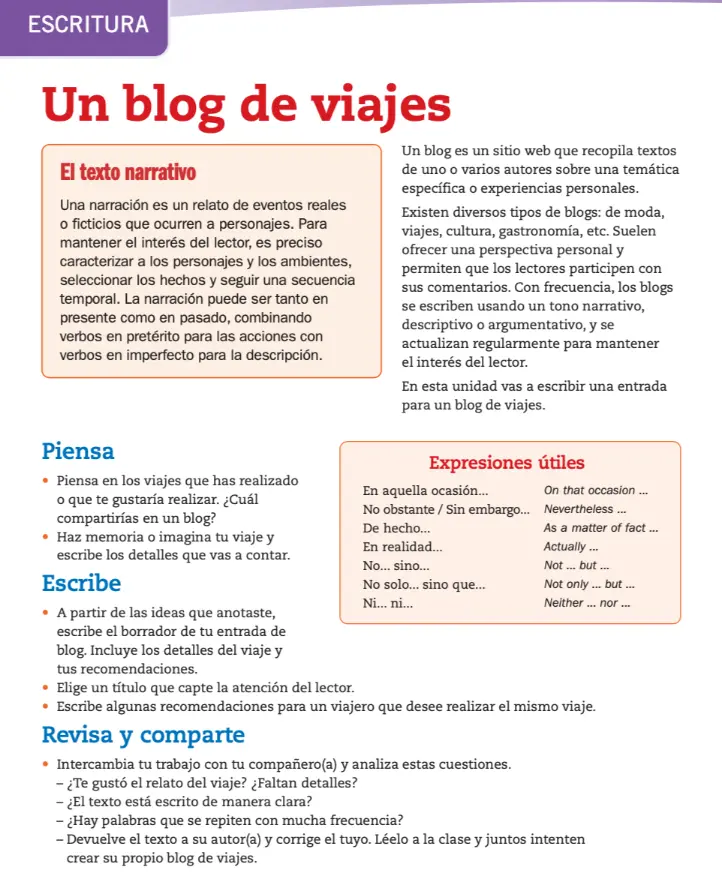
In Level 4, Escritura allows students to participate in a writing workshop aimed at developing writing skills in Spanish in a variety of genres.
A variety of summative assessments offer flexibility in evaluating student progress through real–world activities
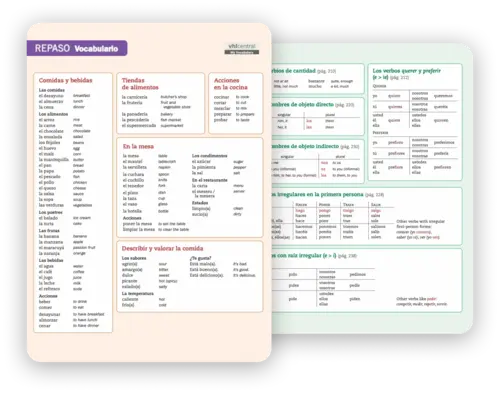
Repasos: The sections Repaso de vocabulario and Repaso de gramática allow students to check their progress and review target words and structures.
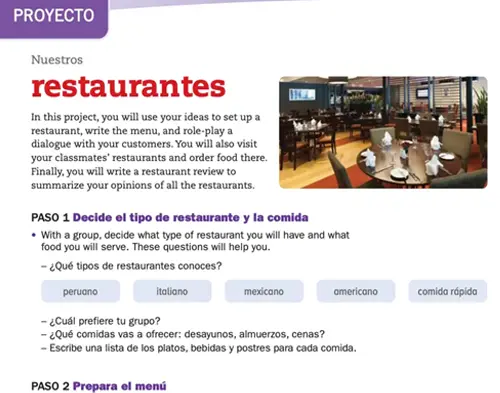
Proyecto: Each unit concludes with a Proyecto in which students use interpretive, interpersonal, and presentational communication skills in a project relating to the culture and theme of the unit.
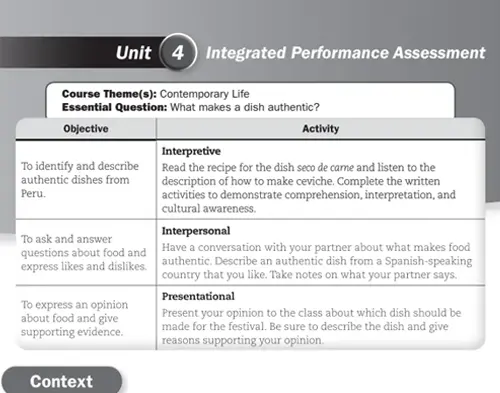
IPA: Additionally, an Integrated Performance Assessment found in the online Resources presents students with a real-world context, including interpretive, interpersonal, and presentational tasks.
At the end of each unit in Level 4, students are introduced to one of the parts of the AP® Spanish Language and Culture Exam. Students can learn strategies, become familiar with the format and expectations, and try a practice activity.

Continuous practice, review, and reinforcement helps students stay on track! See how additional core resources further support instruction and encourage student learning.
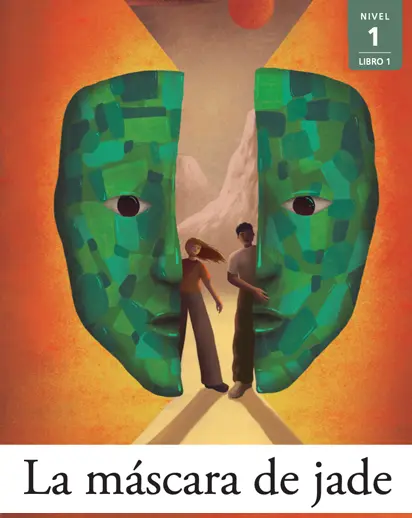
Now available with Companion CI Readers!
Two new Comprehensible Input readers per
level (for
Levels 1, 2, 3) feature culturally relevant and engaging topics aligned to student
proficiency levels. These readers also include comprehension activities and teacher guides for
seamless integration into lessons.
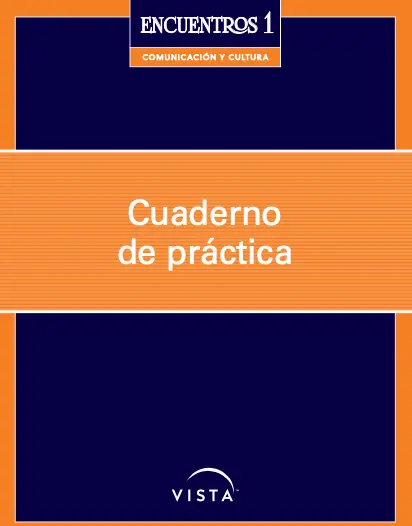
Practice Workbook
The Practice Workbook offers additional support, reinforcing
reading and writing skills presented in Student Edition. Students review and practice discrete
communication, vocabulary, and grammar concepts introduced in each Desafío and then apply
those skills
through integrated language and cultural activities.
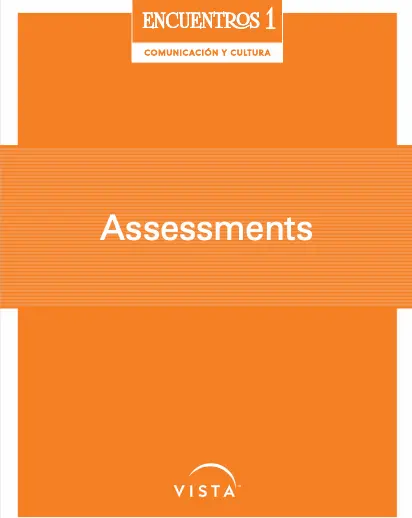
Assessment Program
This comprehensive program helps track student progress and
assess student performance in all skill areas: listening, speaking, reading, writing, grammar,
vocabulary, and cultural understanding. In addition, Communicative Skills Assessments allow you to
gauge student progress toward the intercultural communicative skills highlighted in each
Desafío, and
performance rubrics provide practical scoring and clear feedback.